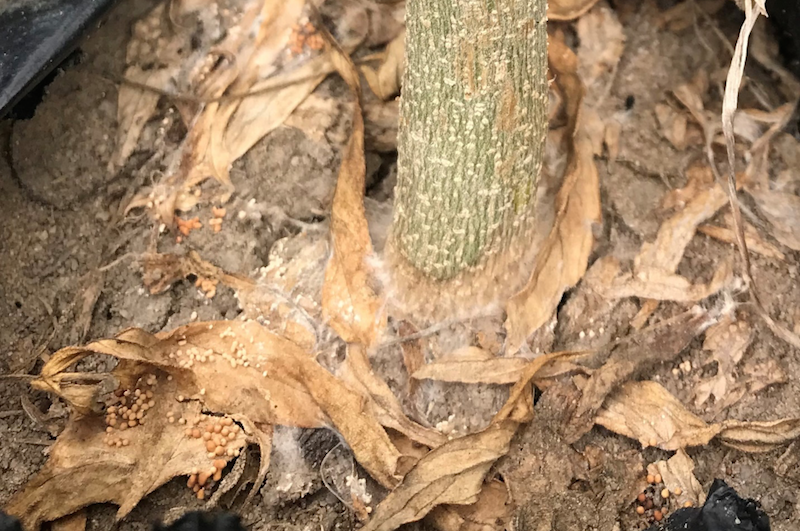
How To Detect Southern Blight In Hemp
Southern blight (caused by Sclerotinium rolsii) is a plant disease known to affect many crops, including hemp. In Florida, southern blight is a threat to hemp once the rainy season and high temperatures of summer set in.
Will Wadlington, director of plant science at Green Point Research, shares tips on how to detect and prevent Southern Blight in hemp.
The Disease
Early symptoms progress quickly from the base of the plant up the stem and to the leaves. As disease progression advances, a white, moldy fungal growth (pictured above) will be visible around the base of the plant with characteristic white or tan round bodies as seen in the images below. As the disease moves rapidly, plant death occurs quickly after observation of first symptoms. Dead, upright plants with leaves still attached will be common in a hemp field suffering from an outbreak of Southern Blight.
Prevention

Select a field with low disease pressure. Sclerotinium rolfsii is a generalist pathogen, meaning it can infect an array of crops ranging from peanuts to melons and tomato. After outbreaks, this soil-borne pathogen survives in upper soil layers for many years. Avoid planting hemp in areas with a history of southern blight. To best reduce disease pressure, implement a non-host plant for crop rotation for 3 to 4 years.
If there is a history of southern blight in your location, deep plowing or addition of soil amendments to enhance colonization reduce chance of outbreaks. After rain events, outbreaks are most likely to occur. Unfortunately, the list of legally compliant anti-fungal controls is limited for hemp.
After Outbreak Occurs
Remove and destroy infected plants immediately. Spread can occur through movement of water. Adjacent plants are likely to become infected. Clean anything that contacts diseased plants.
While no chemical controls currently labeled for hemp are expected to completely mitigate an outbreak, some available products may slow progress of disease transfer in the field as well as lower risk of future outbreaks. We at Green Point Research are actively researching control methods to prevent and mitigate this disease.
— Will Wadlington, director of plant science, Green Point Research



